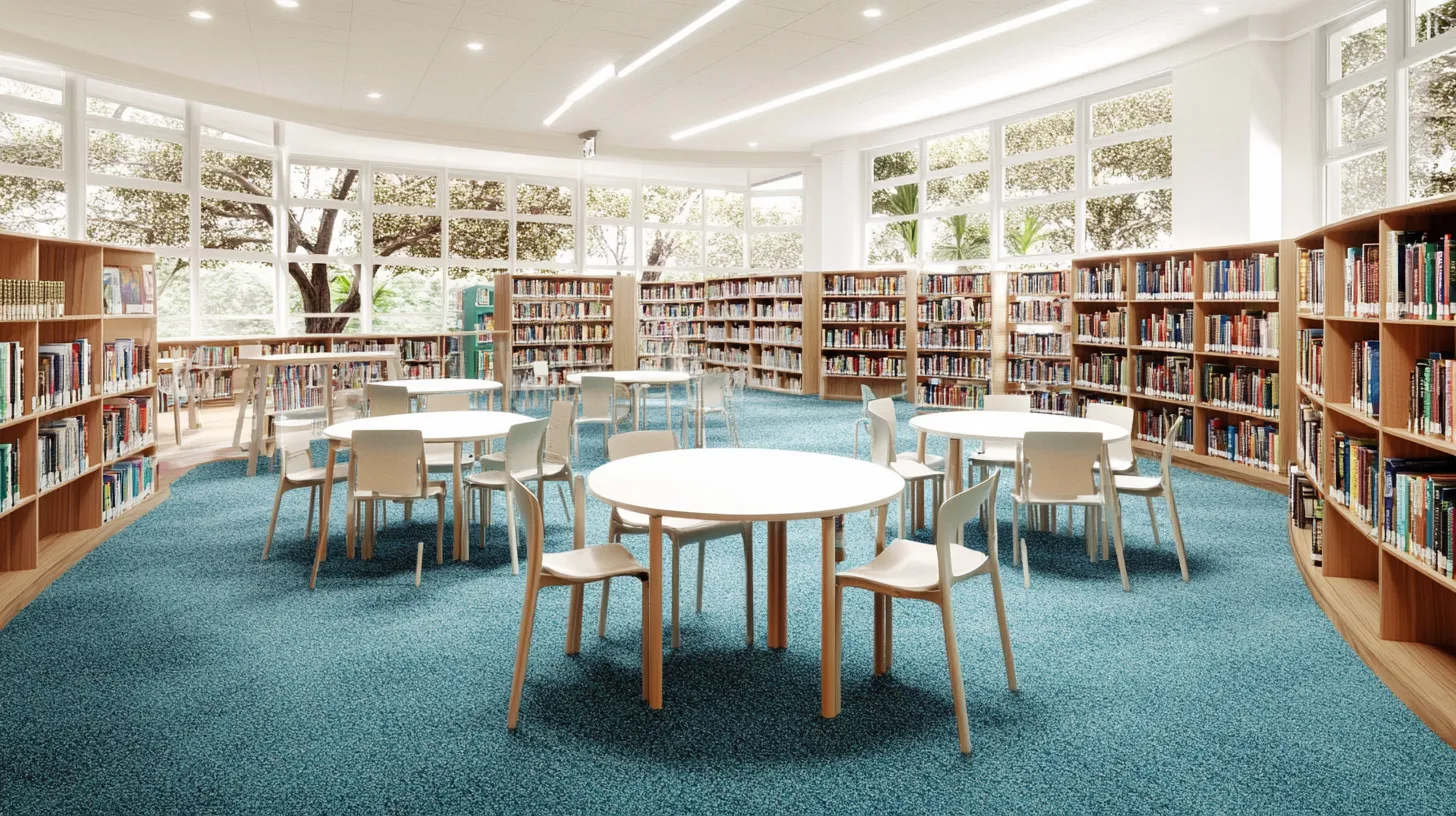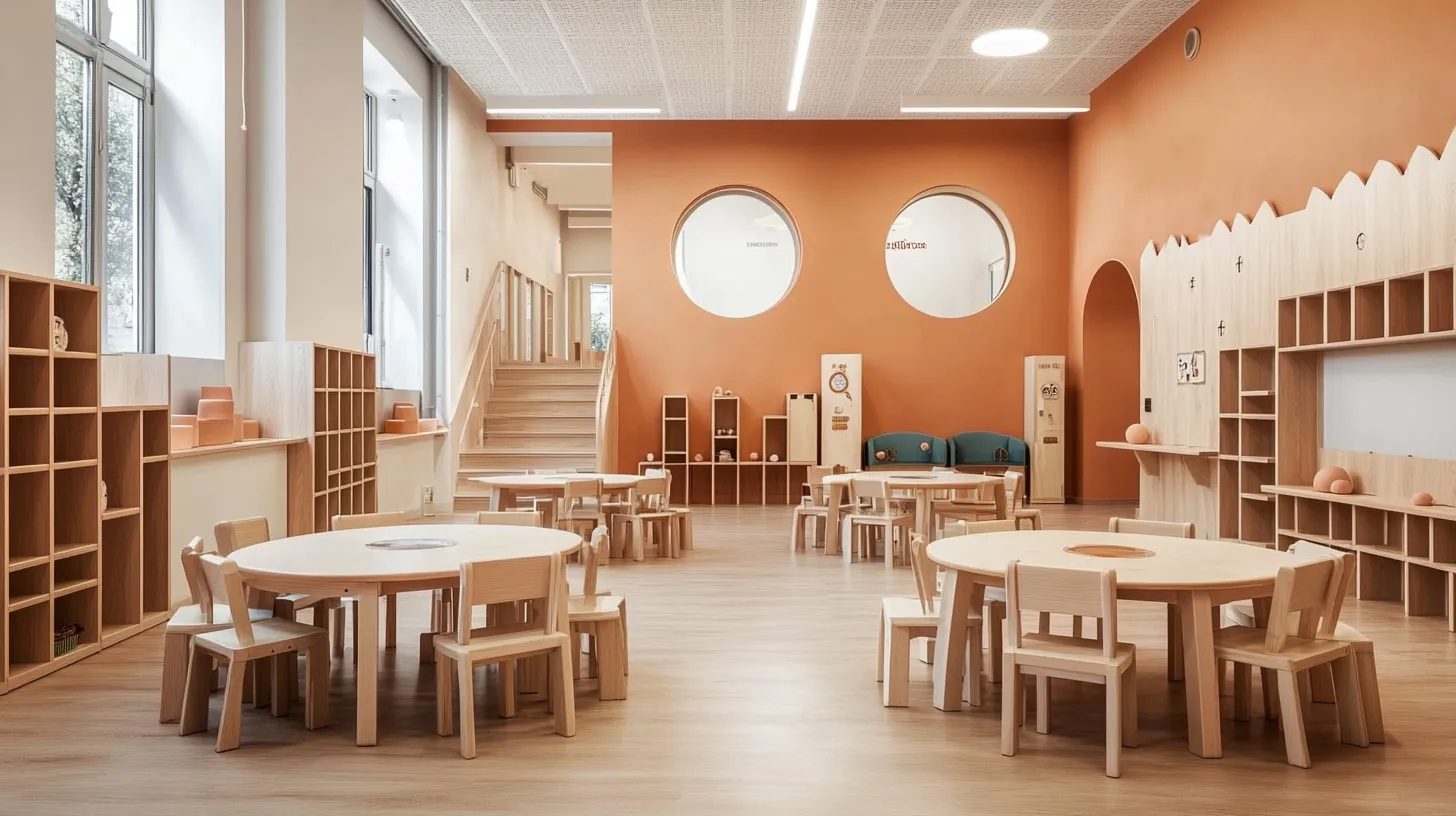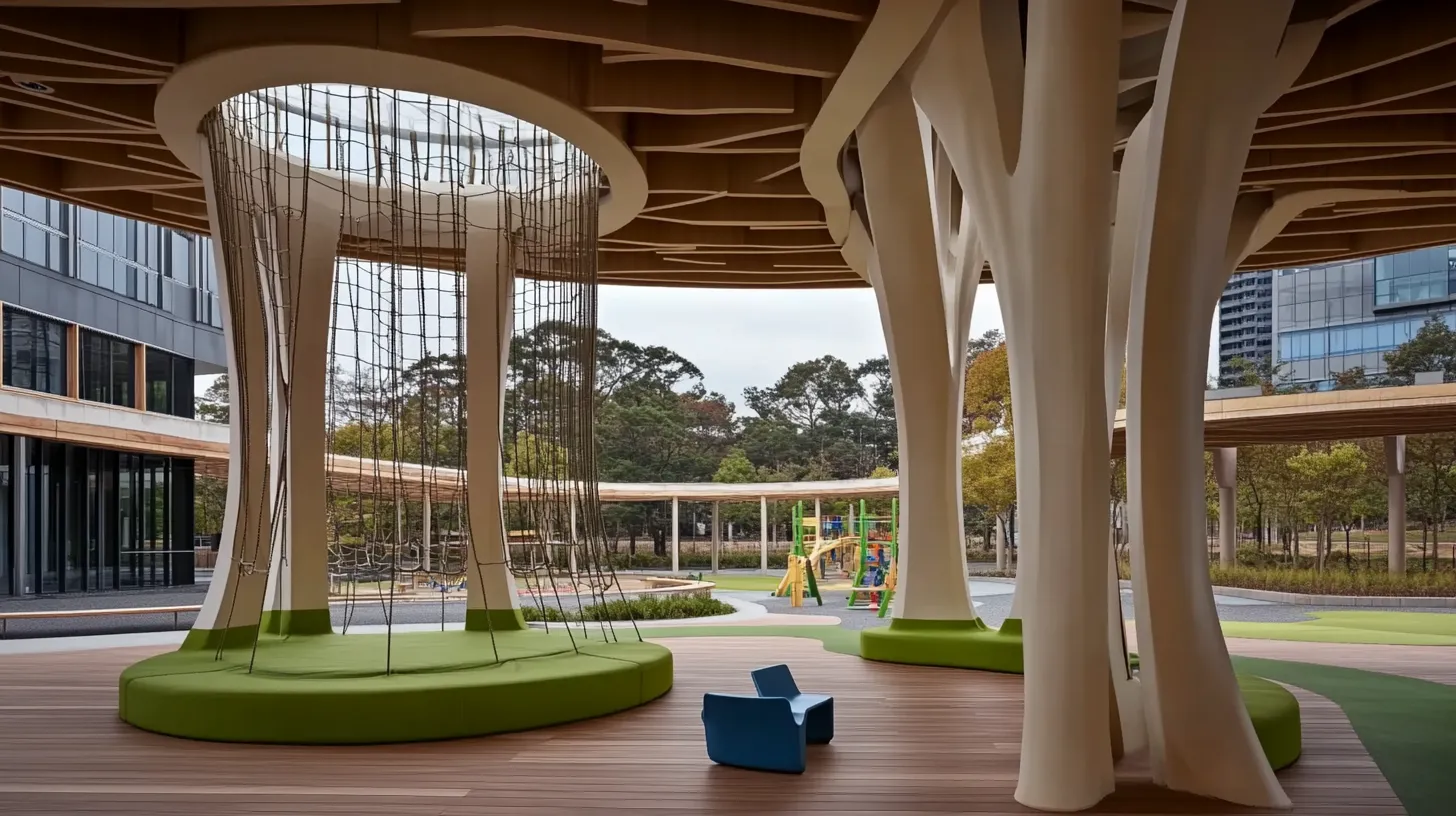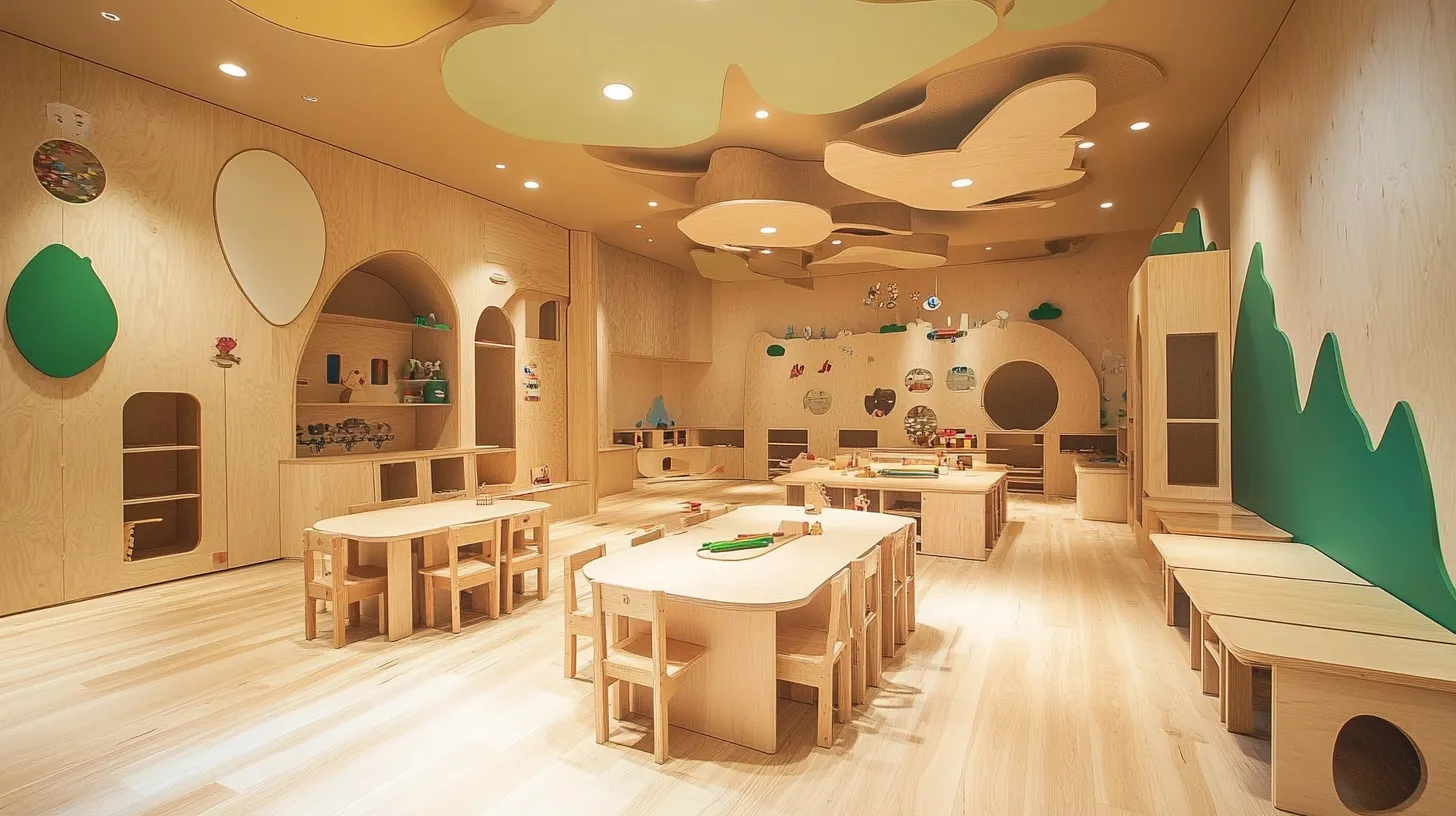Education
The Future of Educational Space Design: 2 Trends Shaping Learning Environments in 2025

As we move into 2025, educational space design is undergoing a significant transformation. Traditional classrooms with fixed rows of desks are becoming a thing of the past. In their place, we see flexible layouts, tech-infused environments, and green, wellness-focused campuses that better support modern education. These trends are reshaping everything from classroom dynamics to campus architecture, creating spaces that engage students and foster better learning experiences. Below, we explore the top three trends driving these changes and how they are revolutionizing learning environments.
1. Flexible & Adaptive Learning Spaces

Walk into a cutting-edge classroom today and you might not recognize it as a “classroom” at first. Flexible and adaptive learning spaces are designed to be easily reconfigured to suit different teaching methods and activities. Schools are investing in modular furniture – think lightweight desks and chairs on wheels – that can be rearranged on a whim. This means a room can shift from a lecture setup to small group work or a circle for discussion within minutes. The result is a dynamic environment where the space adapts to the lesson, instead of the lesson being constrained by the space.
Modular furniture and multi-use areas are key features of this trend. Rather than static desks in straight lines, we now see:
-
Mobile desks and tables: Lightweight pieces that students or teachers can move into new configurations for individual study, pair work, or group collaboration. For example, a teacher might push tables together for a science lab activity, then separate them for test-taking.
-
Varied seating options: From standing desks and stools to beanbag chairs and floor cushions, classrooms offer multiple seating choices. This lets students find a comfortable spot that suits their learning style, promoting a more student-centered environment. One teacher noted that “flexible seating has made an amazing difference… it creates a student-centered environment and promotes responsibility.”
-
Multi-purpose spaces: Areas are designed to serve more than one function. A library might double as a media center and collaborative lounge, or a classroom might have partitions that open up to transform into a larger hall for presentations. The idea is to maximize the utility of every square foot. A single space could host a math class in the morning and turn into a makerspace or community workshop in the afternoon.
Crucially, these adaptive spaces accommodate hybrid learning setups as well. Many modern classrooms come equipped with cameras, microphones, and screens so that remote students can join the class virtually. This integration means the layout must account for both in-person and online participants. For instance, seating might be arranged to face an interactive screen that displays a video-conferencing gallery, ensuring remote learners are literally in the room. By being hybrid-ready, classrooms maintain inclusive participation, whether students are on campus or logging in from home.
All of this flexibility is changing classroom dynamics. Teachers are no longer tethered to the front of the room; they can roam and rearrange activities fluidly. Students, given a choice of where and how to sit, often feel more empowered and engaged. Research backs this up – studies have found that agile, flexible classroom designs can boost student focus and well-being, leading to better learning outcomes. In a flexible space, a lesson can transition from a quiet independent reading session to an energetic group brainstorming without missing a beat. This adaptability fosters creativity and keeps students actively involved in the learning process.
2. Sustainable & Wellness-Focused Design

The third major trend shaping educational spaces is a focus on sustainability and wellness. As schools look to the future, they are building and renovating with an eye toward environmental responsibility and the well-being of students. The result is green campuses dotted with eco-friendly buildings and biophilic design elements that bring nature indoors. At the same time, there’s a growing recognition that the physical environment profoundly affects student health, mood, and performance. In 2025, sustainable and wellness-focused design isn’t a “nice-to-have” – it’s becoming a core principle of educational architecture.
Green building practices are at the forefront of this shift. Many new school buildings are being constructed to strict environmental standards (like LEED certification), using renewable materials and energy-efficient systems. Solar panels are a common sight on rooftops, generating clean energy to power classrooms. Improved insulation and smart thermostats (sometimes AI-driven, as noted earlier) minimize energy waste. Some campuses are even aiming for net-zero energy use, producing as much energy as they consume through renewables. These efforts not only reduce the school’s carbon footprint but also teach students the value of sustainability by example.
In tandem with energy efficiency, schools are incorporating biophilic elements – design features that connect occupants with nature. Large windows and skylights bring in abundant natural light, which has been shown to improve mood and concentration.
Indoor plants and green walls add a touch of nature to classrooms and hallways, acting as natural air purifiers and creating a calming atmosphere. Some schools go even further: consider the Paul Chevallier School in France, which features green roofs and floor-to-ceiling windows that overlook gardens, flooding learning spaces with sunlight and outdoor views to boost students’ well-being.
Such designs blur the boundary between indoors and outdoors, making learning environments feel more open and alive. Additionally, many schools are preserving or creating green outdoor areas – courtyards, rooftop gardens, or adjacent parks – so that learning and socializing can happen in healthy, restorative settings.
Another aspect of this trend is wellness-focused space planning. Designers are paying attention to factors that support both the mental and physical health of students and staff. This includes everything from air quality and acoustics to the availability of quiet zones for relaxation. Proper ventilation and air filtration are prioritized to ensure fresh, clean air in classrooms – a consideration heightened by recent public health concerns. Acoustically treated ceilings and walls help reduce noise stress, creating calmer spaces that are conducive to focus. Many schools are also setting aside dedicated wellness rooms or nooks: cozy corners in libraries for mindfulness and reflection, counseling centers that feel welcoming and safe, even nap pods or comfy lounge areas where older students can recharge between classes.
Ergonomics plays a role here as well. Furniture that supports wellness – like adjustable desks that let students alternate between sitting and standing, or chairs designed for proper posture – is increasingly common.
There’s a growing awareness that students spend many hours in these spaces, so things like good lumbar support and the ability to move around can impact their long-term health. Some progressive schools have even introduced active classroom setups, with balance ball seats or bike desks, to encourage gentle physical activity and alertness while learning.
Importantly, the sustainable and wellness-focused approach extends to the overall campus planning. A “green campus” often includes thoughtful touches like rainwater harvesting systems, on-site gardens (sometimes tended by students as part of learning), and the use of recycled materials in construction. It also means considering how design affects student well-being: plenty of natural gathering spots to build community, safe walking and biking paths to encourage active transportation, and aesthetic choices (colors, lighting, textures) that create a welcoming, stress-reducing ambiance. All these factors contribute to an environment where students feel comfortable and motivated. Studies in biophilic design suggest that when students feel connected to their environment, it can enhance creativity, reduce anxiety, and even improve academic performance. In essence, a school that is good for the planet tends to be good for its people too.
The educational spaces of 2025 are a far cry from the static classrooms many of us grew up in. Schools and universities are embracing flexible layouts that can morph to fit the moment, embedding technology to create smart, interactive campuses, and designing with sustainability and student well-being in mind at every step. It’s an insightful evolution — one that acknowledges that learning isn’t one-size-fits-all, and that the right environment can profoundly boost how we teach and learn.

What does this all mean for educators, administrators, and architects? It means collaboration is key. Teachers can dream up innovative ways to use space if given flexible designs. IT professionals and campus planners must work hand-in-hand to weave technology into the building blueprint. Architects and designers are challenged to think green and human-centric, creating schools that inspire and nurture. The tone across the board is optimistic and forward-looking. By focusing on adaptability, connectivity, and sustainability, educational space design is aligning with the needs of 21st-century education – making learning more engaging, inclusive, and inspiring for the next generation. And perhaps most exciting of all, this transformation is still ongoing. As we continue to experiment and learn from these trends, the classrooms and campuses of the future will only get better at supporting the success and well-being of every learner who walks through their doors.
Design the Future of Learning with AI Spaces
At AI Spaces, we specialize in creating future-ready educational spaces that blend innovation, functionality, and sustainability. Whether you’re redesigning a classroom, upgrading a university campus, or integrating smart learning environments, we can help you build spaces that support learning and well-being.
Contact us today to start designing the next-generation learning environment for your students!

.webp)

.webp)
.webp)